| Gemstone Chart |
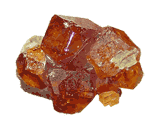 Natural Hessonite Natural Hessonite
Hessonite is one of the gem varieties of the garnet mineral, grossular. Hessonite is usually cinnamon brown and has been called "cinnamon stone". Hessonite can also be orange; this color is becoming common on the gem markets.
Color: Brownish-orange, brownish yellow, aurora red
Categories: semi-precious stone
Chemical Composition: Ca3Al2(SIO4)3
Crystal Group: Cubic
Refractive Index: 1.72-1.74
Hardness: 7.25
Density: 3.65
Occurrence: Sri Lanka, Mexico, Brazil, Canada, Madagascar
| 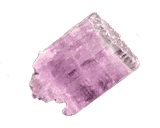 Natural Kunzite Natural Kunzite
Kunzite is the pink to light purple gem variety of the mineral Spodumene.Although kunzite is a relatively soft and delicate gem, and can fade after prolonged exposure to light, its appealing color makes it a popular gem. Small gems are seldom cut from kunzite because of its cleavage and strong pleochroism. It is rarely seen in rings, necklaces, or any other forms of jewelry where small stones are required.
Color: Pink, Lilac, Light Violet
Categories: semi-precious stone
Chemical Composition: LiAlSi2O6
Crystal Group: Monoclinic
Refractive Index: 1.660 - 1.675
Hardness: 7
Density: 3.17 - 3.19
Occurrence: Africa, Brazil, Canada, Madagascar, Mexico, Myanmar, Afghanistan, Sweden, and USA (California).
| 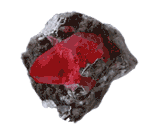 Natural Rhodochrosite Natural Rhodochrosite
Rhodochrosite is a manganese carbonate mineral with chemical composition MnCO3. The pink color of rhodochrosite is caused by the element manganese and it is formed when manganese is dissolved by ground water and combines with a carbonate material and then drips off the ceiling of caves and crevices deep underground.Rhodochrosite often forms pink and white bands. It is often carved into figurines or boxes while the tubular stalactite formations are often sliced for use in jewelry. Fine gem quality crystals are sometimes cut into gemstones for use in high end jewelry, but the more common grade is used extensively in silver and gold jewelry.
Color: Rose red, raspberry red, pink, grey, fawn, brown
Categories: semi-precious stone
Chemical Composition: MnCO3
Crystal Group: Trigonal
Refractive Index: 1.600 – 1.820
Hardness: 4
Density: 3.45 – 3.70
Occurrence: Argentina; Colorado, U.S.A.; Romania; Hungary; India; South Africa; Saxony, Chile; Peru; Mexico.
| 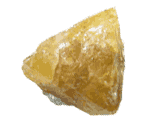 Natural Scheelite Natural Scheelite
Scheelite is a calcium tungstate mineral with the chemical formula CaWO4.With a hardness of 4.5 to 5 on the Moh's ScaleScheelite is a rather soft stone. Traditionally, it was considered a collector's gem and unsuitable for use in jewelry.
Color: Yellowish-white, brownish, orange yellow
Categories: semi-precious stone
Chemical Composition: CaWO4
Crystal Group: Tetragonal
Refractive Index: 1.918 - 1.937
Hardness: 4.5 - 5.0
Density: 5.9 - 6.1
Occurrence: Czechoslovakia; Italy; Switzerland; Finland; Cumberland, Cornwall, England; Santa Cruz, Sonora, Mexico; South Dakota, Conneticut, Colorado, Utah, California, Arizona, USA; New South Wales and Queensland, Australia; Mian Yang, and Ping Wu, Sezhuan, China; Hollinger Mine, Ontario, Canada;
| 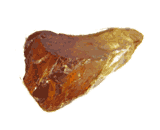 Natural Sphalerite Natural Sphalerite
Sphalerite is one of the very few minerals that has a total of six directions of cleavage, and occurs in many different colors. It is an unusual rare gemstone which is craved for by people as it possesses more brilliance than diamonds.
Color: Orange, yellow, brown, green
Categories: semi-precious stone
Chemical Composition: ZnS
Crystal Group: Cubic
Refractive Index: 2.37
Hardness: 3.5-4
Density: 4.05
Occurrence: Spain, Mexico
|
|
